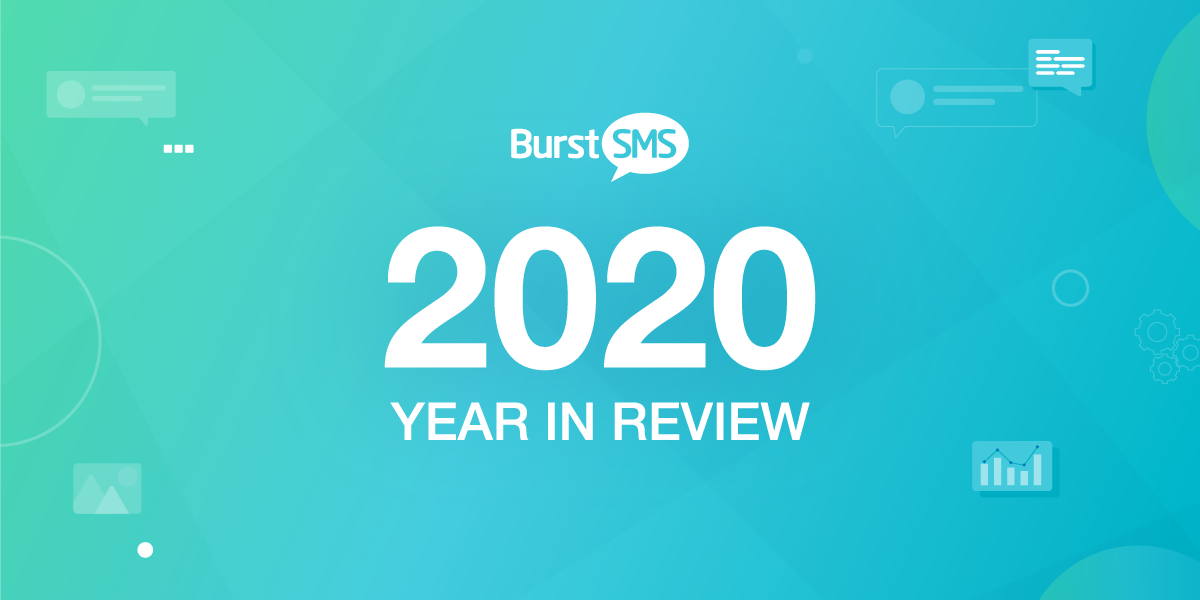Optimising internal communications while WFH (Part 3)

Welcome to the third part of our Burst SMS WFH (Work from Home) series. If you’re just joining us, we are following up on our previous discussion on the trial and tribulations of switching to a work from home operation. If you have a chance, give it a read, but this week we’ll talking about how to optimise your internal communications.
Communication has been a common theme throughout our WFH series, and there’s a good reason for it. Never before has it become more crucial to keep your business in-the-know when moving to a WFH operation.
Be critical about your communication tools. Do you need all of them?
Efficient internal communication is the core of any successful business, and is a vital ingredient in alleviating many issues that arise while WFH. While apps like Slack and Zoom help tremendously with streamlining our communication processes, there is always an overhanging concern that we might be misusing them or that there is a better alternative.
While these tools help maintain direct communication, no product is flawless, so it’s essential to know the pros and cons. It’s also worth noting as well if these tools are even needed in the first place. Many issues can arise just from having too many of the same tools, which has a higher chance of, ironically, dividing your company rather unifying it.
Here are three questions you should ask yourself when identifying if a communication tool will be useful for your business:
- Do I already have a tool that can perform the same function? It’s vital to reduce information clutter and keep your business communication channels clear and organised, so investigate and compare the products you already have and see if one is unnecessary. If one app can solve your problem, you shouldn’t need another for the same issue.
- Is it easy to set-up and configure? While opinions can vary, it’s a valid point to want a product that’s easy to use. Whether it’s simple notification set-ups or more complex API integrations, it’s valuable to know if your communication tool can be flexible. Research how other businesses are using these communication tools to see if it’s the right fit for you. For integration options, considering checking Zapier to see if it’s possible to connect your other applications as well.
- Does it make collaboration easy? Sharing and working on multiple projects can become a hassle if your tools can’t keep up. Make sure your equipment allows for seamless sharing and collaboration so you can reduce down-times and even errors when working on projects remotely.
If you’re unsure or need recommendations, start checking these products:
Define your casual and urgent channels
The crux of implementing a flexible communication strategy is defining what your business considers “casual” and “urgent” comms. This can vary depending on your business, but it’s important to note that these are entirely different problems and require different solutions.
At Burst, we use Slack and email for casual and less urgent internal comms that are quick and brief. At the same time, the more urgent messages usually come in the form of direct calls via phone, video calls, and SMS messages.
Mixing or being unable to identify between the two can become a problem, even more so when working within a tight deadline. Solve this by developing a standard communication process within your company for handling casual and urgent comms.
Take into consideration how your business operates and apply what you believe would be the most efficient strategy. Try not to complicate things; communication should feel natural. Remember to segment your casual comms from your urgent comms. Sometimes a simple text is all you need to be efficient. Consider investigating and getting the opinions of your team and co-workers to best strategise on your plan.
As we mentioned before in our previous article, these times allow for more experimentation, so explore and apply what you think might be a right fit for your business.
Start being creative with internal messaging
An excellent way to not only optimise but improve internal communications is by being creative with how you communicate within your company. This can range from quick company-wide updates, external surveys, or even applying more focus on urgent updates for customers or clients.
For this reason, SMS becomes a reliable option. When compared to other communication applications such as Slack or email, SMS messages aren’t bogged down by the natural clutter that comes from these active social channels. 98% of SMS messages are viewed within less than 3 minutes, which gives you the knowledge and confidence that your messages will be noticed. That said, SMS messaging can’t replace the flexibility of the more expansive options that programs like Slack, email, etc. offer in terms of everyday use. Still, there are benefits in using them together.
Here, for example, would be an ideal use for an IT department that is looking to stay on top of ticket issues by updating their clientele (or themselves) with SMS alerts and notifications:
Even sending out an SMS survey can also be a creative way to stay on top of your client or company’s well-being.
Creative internal communications can give companies the flexibility to keep your team productive. Consider integrating conversations or notifications such as these into your daily or weekly plan. Give your business the ability to stay on task as well as to relieve stress and other pressures while WFH, and, if you are looking for ideas for some specific messaging, visit our SMS templates page to get inspired.
Keep the clutter to a minimum
One of the biggest challenges facing any business, especially one converting to a WFH operation, is managing the clutter that comes with internal comms. We’ve all been there: email inboxes with 100+ unopened emails, calendar invites that stack upon themselves, and more than a couple notifications from several applications.
There are many ways you can solve these issues, but here is how we at Burst handle our communication clutter.
- Make sure to prioritise different levels of communication; focus on the necessary conversations, and limit dialogue that isn’t 100% necessary.
- Develop more specific communication channels. Make sure you can access the channels you are supposed to be in and remove yourself from ones you don’t use. There is no need to be a part of every conversation.
- Implement a central repository for all of your information. Whether it’s Google Drive or Dropbox, make sure everyone in your company knows where to go if they need access to company assets and general information.
- Limit or stop the information overload from your other applications. Adjust the notification settings in your other tools, or unsubscribe from external messages. If it doesn’t give you any value, you don’t need it.
- Develop ground rules for yourself or your workers and follow them—for example, limit meeting times to 30-45min. Guidelines like this can help minimise clutter and standardise communication, helping reduce stress and save time.
Each solution will vary in its effectiveness, but take note of them anyway. They may be the answer to reduce your message and communication clutter all the same.
Final Thoughts
Optimising both internal and external communications while WFH is a goal all businesses, big or small, should aspire to achieve. During these times of uncertainty, it is vital to make sure your ideas are shared clearly. Develop a communication strategy using the solutions above to help focus on keeping clients informed, employees aware, and yourself in control, and you’ll soon see a significant improvement in the way your business operates, even from your home office.


